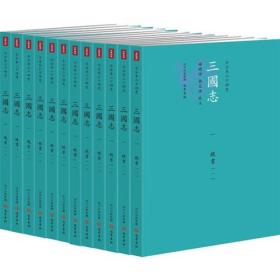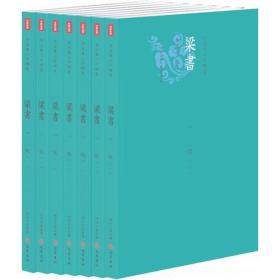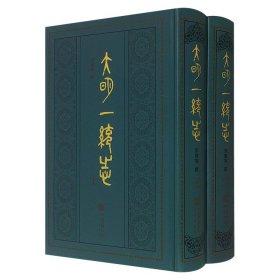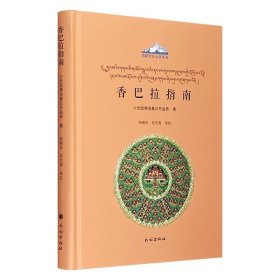
人体呼吸健康研究:N95过滤式面罩呼吸器的佩戴性能
正版库存书,量大可联系客服!如遇图片不符,书名为准,感谢支持!
¥ 52.32 4.8折 ¥ 109 全新
仅1件
作者申胜男等
出版社电子工业出版社
ISBN9787121396274
出版时间2020-12
版次1
装帧平装
开本16开
纸张胶版纸
页数268页
定价109元
货号8470886
上书时间2024-09-27
- 店主推荐
- 最新上架
商品详情
- 品相描述:全新
- 温馨提示:5折以下图书多为出版社尾货,大部分为全新,个别图书品相存在切口、划线标记、光盘等附件不全的情况,发货前会统一检查征求您的意见,如有疏忽之处,收到货后可联系客服协商处理,感谢配合!
- 商品描述
-
基本信息
书名:人体呼吸健康研究:N95过滤式面罩呼吸器的佩戴性能
定价:109元
作者:申胜男等
出版社:电子工业出版社
出版日期:2020-12-01
ISBN:9787121396274
字数:
页码:268
版次:
装帧:其他
开本:16开
商品重量:
编辑推荐
内容提要
目录
Chapter 1 Introduction0011.1 Background0021.2 Motivation0041.3 Outline007Chapter 2 Study of the filtration performance of multi-fiber filters0092.1 Introduction0112.2 Model of multi-fiber filters0142.2.1 Geometric model and simulation method of multi-fiber filters0142.2.2 Model validation0162.3 Filtration efficiency and its optimization0202.3.1 Comparison of filtration performance between parallel and staggered designs0202.3.2 Filtration efficiency at different face velocities and particle diameters0222.3.3 Filtration performance of layered filters with the same total SVF0242.3.4 Optimization of pressure drop and filtration efficiency0252.4 Conclusion028References030Chapter 3 Study of particle rebound and deposition on fiber surface0343.1 Introduction0363.2 Models of flow field and particle movement0413.2.1 Flow field and particle movement0413.2.2 Particle rebound model044?3.3 Particle transport and deposition0483.3.1 Effect of particle rebounds on particle deposition0483.3.2 Effects of face velocity on particle deposition0503.3.3 Effects of particle diameter on particle deposition0523.3.4 Filtration efficiency of a single fiber0543.4 Conclusion057References059Chapter 4 Investigation of the flow-field in the upper respiratory system when wearing N95 FFR0644.1 Introduction0664.2 Modeling of full breathing cycles0684.2.1 Flow field reverse modeling0684.2.2 CFD simulation of a full breathing cycle0714.3 Flow field of a full breathing cycle0744.3.1 Flow characteristics of a full breathing cycle0744.3.2 CO2 volume fraction0754.3.3 Temperature distribution inside FFR cavity0774.3.4 Pressure and wall shear stress inside upper respiratory airway0794.4 Discussion0824.5 Conclusion085References086Chapter 5 Investigation of water vapor condensation on the inner surface of N95 FFR0895.1 Introduction0915.2 CFD modeling of water vapor condensation0935.2.1 Model of water vapor condensation0935.2.2 CFD-setup and boundary conditions of water vapor condensation0935.3 Water vapor condensation on the inner surface of N95 FFR0975.3.1 Effects of different environmental temperatures0995.3.2 Effects of different breathing velocities1025.3.3 Effects of different breathing frequencies1045.4 Discussion1085.5 Conclusion110References111Chapter 6 Effect of vapor condensation on micro-climate in the deadspace of N95 FFR1136.1 Introduction1156.2 CFD modeling of vapor condensation1176.2.1 Model of vapor condensation1176.2.2 CFD-setup and boundary conditions of vapor condensation1186.2.3 FFR performance and vapor condensation distribution1206.3 Experiment of micro-climate inside N95 FFR1266.3.1 Experiment of temperature and relative humidity measuring inside FFR1276.3.2 Experiment of bacteria accounting on the inner surface of FFR1296.4 Conclusion133References134Chapter 7 Investigation of movement characteristics and respiratory deposition of indoor cigarette particles1367.1 Introduction1387.2 Model of particle movement and respiratory deposition1417.2.1 Description of room, human and particles system1417.2.2 CFD model of cigarette particles deposition1437.2.3 PM2.5 measurement1467.3 Flow field and cigarette particles deposition1477.4 Conclusion155References156Chapter 8 An improved FFR design with a ventilation fan: CFD simulation and validation1598.1 Introduction1618.2 Improved FFR design and CFD simulation1638.2.1 Improved FFR design1638.2.2 Simulation method of flow field in FFR1648.3 Performance of the ventilation fan and its effects1698.3.1 Flow characteristics of the ventilation fan1698.3.2 Effects of fan orientation1708.3.3 Experiment on temperature of headform and FFR1728.4 Conclusion177References178Chapter 9 Design of the FFR with an intelligent control fan1819.1 Introduction1839.2 Improved FFR design1849.3 Design of intelligent control system1869.4 Test results of FFR performance1899.5 Discussion1939.6 Conclusion194References195Chapter 10 Study of contact characteristicetween a respirator and a headform19610.1 Introduction19810.2 Models and methods of contact characteristicetween a respirator and a headform20210.2.1 Geometric models of headform and respirator20210.2.2 Simulation methods of contact characteristics20510.3 Contact characteristicetween a respirator and a headform20810.4 Conclusion214References216Chapter 11 The effects of facial expressions on respirators fit21811.1 Introduction22011.2 Models and methods of facial expressions22311.2.1 FE models of the headfrom and respirator22311.2.2 Simulation methods of facial expressions22511.3 Effects of facial expressions on respirators fit22711.4 Conclusion234References236Chapter 12 Customized design and 3D printing of face seal for an N95 FFR23812.1 Introduction24012.2 Design, manufacture and test of customized face seals24212.2.1 3D laser scanning of human headform24312.2.2 Customized design of FFR face seal24312.2.3 3D printing of the FFR face seal24512.2.4 Experiment setup and procedures24512.3 Contact characteristicetween the FFR and headform24912.4 Discussion25312.5 Conclusion255References256
作者介绍
申胜男,武汉大学动力与机械学院副教授,硕士生导师,分别于2001年和2007年获得哈尔滨工业大学的学士和硕士学位,2012年毕业于新加坡南阳理工大学,获机械工程专业博士学位。已发表国际SCI期刊论文50余篇,国际会议学术报告40余篇,授权发明专利9项,软件著作权3项。作者长期从事跨尺度多物理场耦合分析、生物流体力学的研究,以核心成员身份参加新加坡科技研究局基金项目2项,近年又主持国家科学自然基金青年项目1项,主持湖北省自然科学基金青年项目1项,主持武汉大学自主科研(青年教师)资助项目1项,主持武汉大学引进人才(青年学术骨干)项目1项,项目金额共计570多万。2014年获批武汉大学\"351人才计划”珞珈青年学者,2015年获批湖北省楚天学者。同时作者也积极开展国内外的学术交流与合作,也取得了丰硕的成果。直至今日,已和国内多所大学和研究机构建立了学术交流与合作关系,与新加坡南洋理工大学,德克萨斯理工大学保持着密切的联系,建立了实质性的科研合作关系,极大推动了学院学术交流的发展。
序言
-

【封面】
— 没有更多了 —

















以下为对购买帮助不大的评价